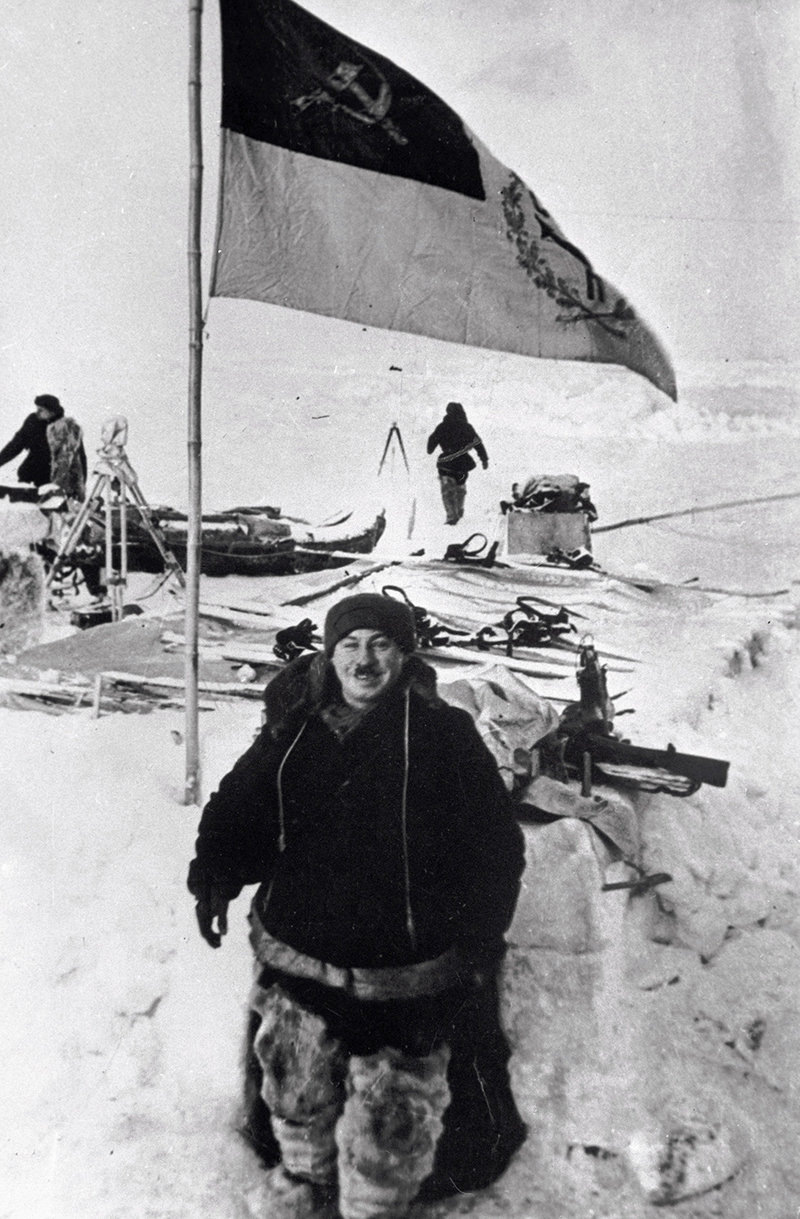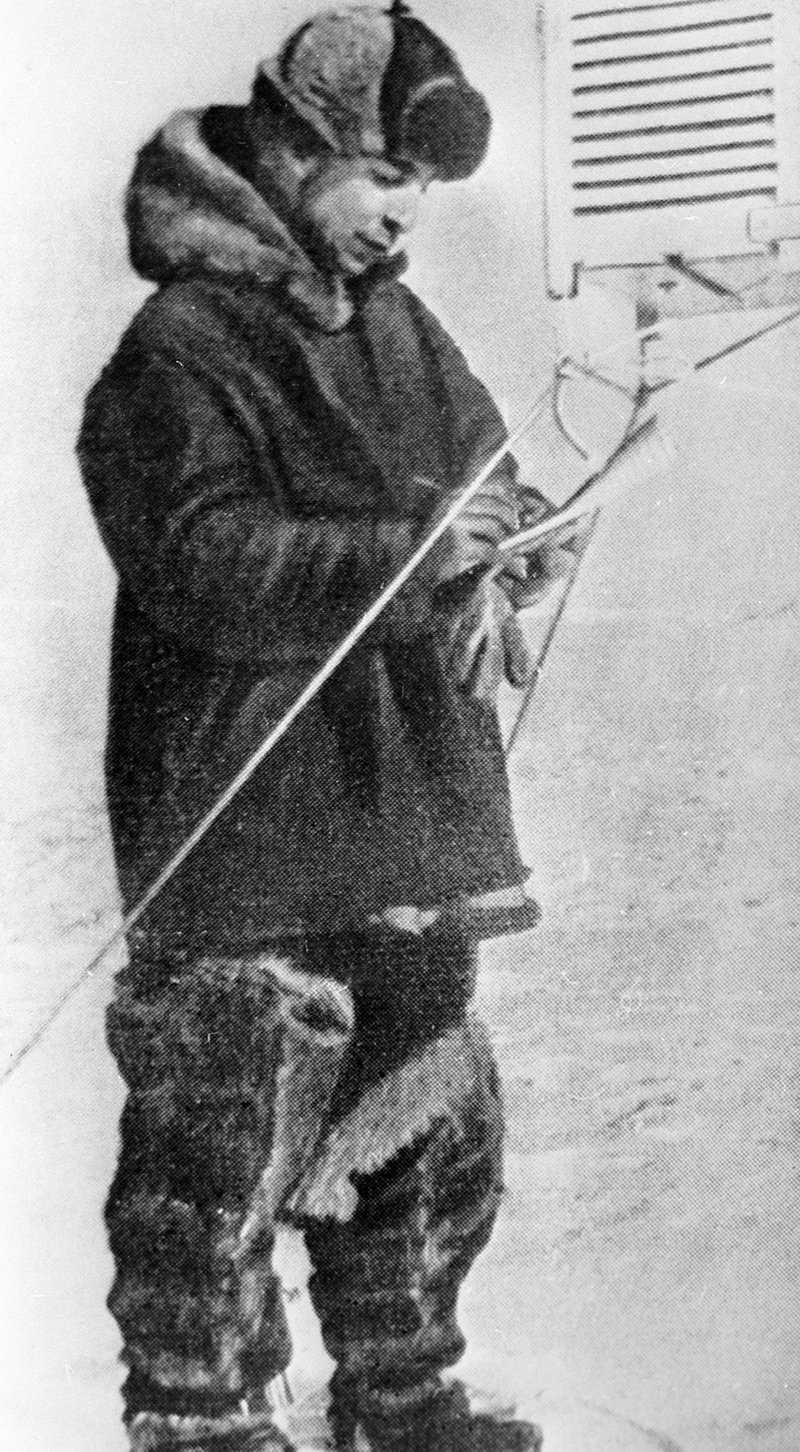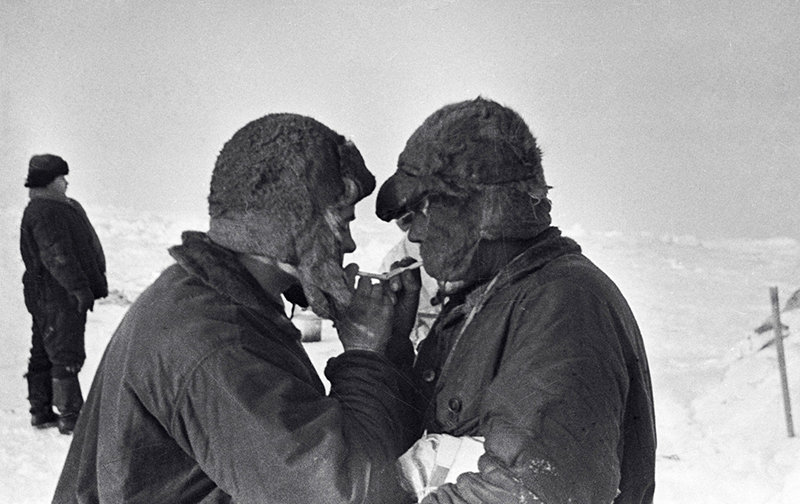At last, we were airborne, and we could see large patches of clear ice-free water and crushed ice down below. The plane was gradually climbing and getting on course ... No, this dull technical language won't do. The plane was headed toward victory and the North Pole!
Rudolf Island soon became barely visible, and its smooth icy dome disappeared in the ice-covered sea. They asked us to sit closer to the plane's center of gravity, so as to make the pilot's work easier.
We were dressed warmly in hooded fur sweaters, fur trousers, fur stockings and fur boots. But the frost was making itself felt. We had to keep our toes moving, but we were not allowed to stamp our feet inside the plane.
We were flying for almost six hours. All of a sudden, Spirin and Fyodorov started running around in excitement. His face glowing, Yevgeny Fyodorov shouted to me: "There is the Pole!" I dashed instinctively toward the porthole. I had to see how the North Pole looks from above. Alas, we could only see the same smooth cloudy surface which was swirling in some places
At 11:10 am, a USSR-N-170 plane commanded by Mikhail Vodopyanov flew over the North Pole. For safety's sake, we flew a bit further and descended from 1,750 to 200 meters, landing at 11:35 am.
The landing strip was just about 240 paces; and the plane stopped in its tracks. Hurrah, we had reached the Pole! Everyone was beaming with delight. People were crowding near the hatch in anticipation. We wanted to hit the ice as soon as possible and see how the Pole looked.
We had thought about this work for many months and had prepared painstakingly for it, taking all aspects, even mere trifles, into account. Now we were swinging into action. Mechanics were covering the engines with sheaths. We were gathering up all the essentials near the plane, including sleds, tents, kitchenware and warm clothing. Otto Schmidt and Vodopyanov were already dragging the first fully-loaded sleds, filled with various items, toward the nearest hummock ridges.


![Ivan Papanin (right) and Pyotr Shirshov [left] pack kitchen utensils during evacuation of SP-1 polar station Ivan Papanin (right) and Pyotr Shirshov [left] pack kitchen utensils during evacuation of SP-1 polar station](https://arctic.ru/images/84/23/842362.jpg)


